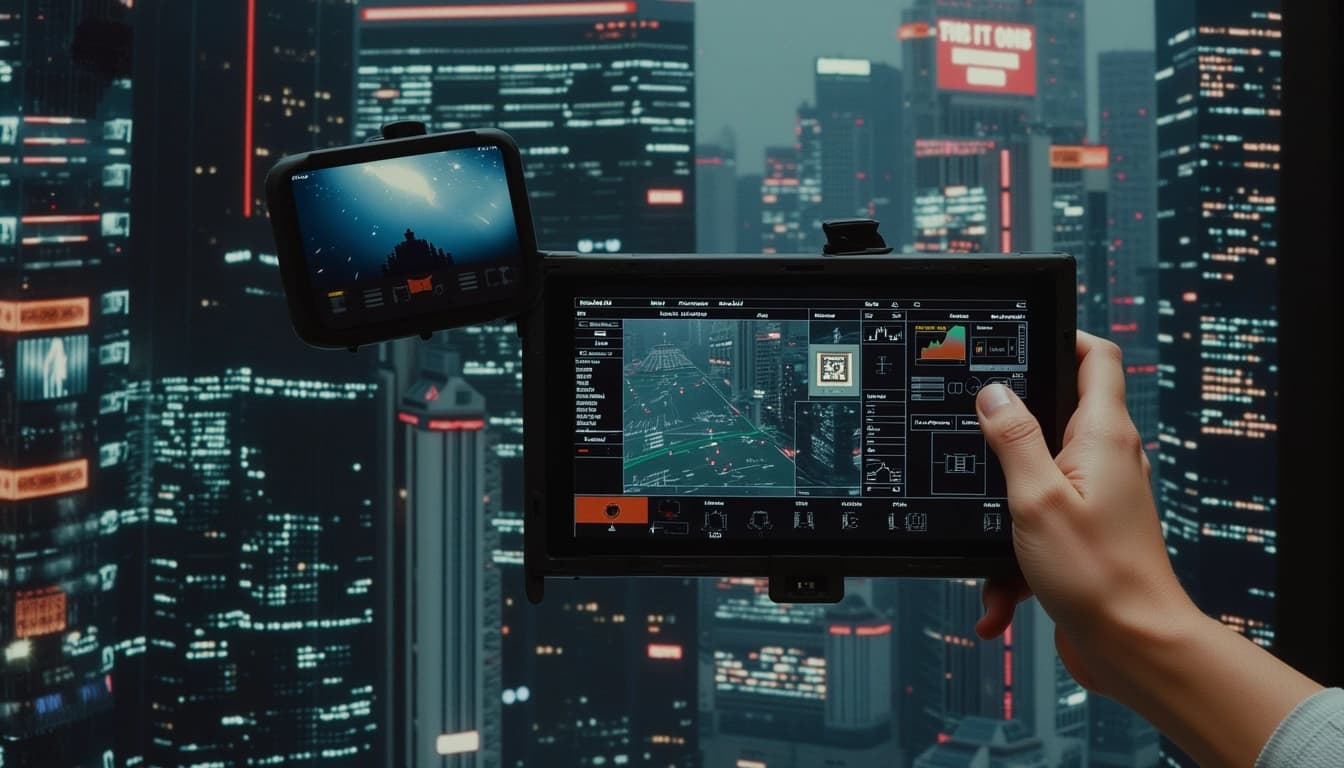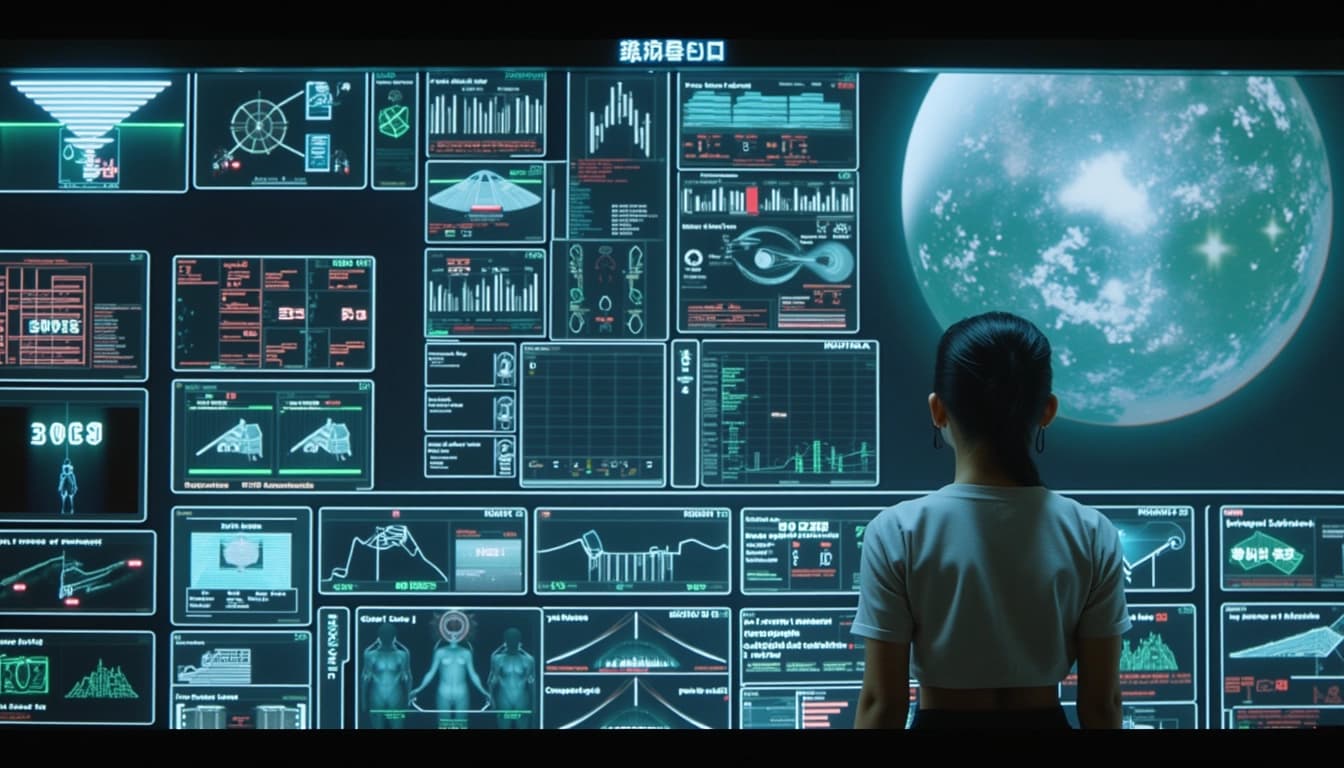
Exploring the realvisxl-v3-multi-controlnet-lora Model
By John Doe 5 min
Key Points
Research suggests the realvisxl-v3-multi-controlnet-lora model, a fine-tuned SDXL, excels at transforming poses into various styles using multiple control nets and LoRA for customization.
It seems likely that users can input a pose via openpose control net and specify styles through prompts, potentially enhanced by style-specific LoRAs.
The evidence leans toward its use in photorealism, supporting up to three control nets like openpose, edge canny, and depth, offering flexible image generation.
An unexpected detail is its support for img2img and inpainting, allowing further refinement of generated images.
Introduction to the Model
The realvisxl-v3-multi-controlnet-lora model is a specialized version of Stable Diffusion XL (SDXL), fine-tuned for photorealism. It integrates multiple control nets and Low-Rank Adaptation (LoRA) to offer enhanced control over image generation, particularly useful for transforming poses into desired styles.
How It Works for Pose to Style Transformation
This model allows users to input a pose using the openpose control net, which captures the skeletal structure of a person. Users can then specify the desired style through a textual prompt, such as "in the style of Van Gogh." Additional control nets, like edge canny for outlines or depth for perspective, can be combined to refine the output. LoRA adaptations can further customize the style, potentially loading pre-trained style-specific models for more consistent results.
Advanced Features and Applications
Beyond pose and style, the model supports img2img for adjusting generated images and inpainting for modifying specific areas. This makes it versatile for artists and designers looking to create detailed, stylized images from pose inputs, with applications in digital art, character design, and more.
Survey Note: Detailed Exploration of realvisxl-v3-multi-controlnet-lora's Multi-Control Powers
Introduction to Stable Diffusion and SDXL
Stable Diffusion, developed by Stability AI, is a text-to-image generative AI model utilizing a latent diffusion approach to create images from textual descriptions. It has gained popularity for its versatility across styles and subjects. Stable Diffusion XL (SDXL), an advanced iteration, enhances image quality and generation speed, with improved detail handling and prompt alignment.
Understanding Control Nets
Control nets, or ControlNet, is a technique that adds conditional inputs to Stable Diffusion, such as depth maps, edge maps, or pose maps, to guide image generation. This ensures outputs align with specific visual properties defined by these inputs. In the realvisxl-v3-multi-controlnet-lora model, multiple control nets can be used simultaneously, offering nuanced control.
Supported Control Nets
Supported control nets include openpose for pose, edge_canny for edges, depth_leres and depth_midas for depth, soft_edge_pidi and soft_edge_hed for soft edges, lineart and lineart_anime for line art, and illusion for QR monster effects, among others. These tools provide precise control over the generated images, allowing for highly customized outputs.
Role of LoRA
LoRA, or Low-Rank Adaptation, is a method for efficiently fine-tuning large models by updating a small subset of parameters, enabling adaptation to new tasks or styles without extensive retraining. In this model, LoRA supports custom adaptations, allowing users to load style-specific enhancements, which can be crucial for achieving consistent artistic styles in generated images.
Exploring Multi-Control Powers
The realvisxl-v3-multi-controlnet-lora model, available on Replicate, supports up to three simultaneous control nets, enhancing flexibility. For instance, combining openpose for pose with edge_canny for outlines and depth_midas for depth can produce highly detailed and controlled images. This multi-control capability makes the model highly versatile for various creative applications.
Conclusion & Next Steps
The realvisxl-v3-multi-controlnet-lora model represents a significant advancement in AI-driven image generation, offering unparalleled control and customization. By leveraging multiple control nets and LoRA adaptations, users can achieve highly specific and photorealistic results. Future developments may further enhance these capabilities, opening new possibilities for creative expression.
- Stable Diffusion XL enhances image quality and generation speed.
- Control nets provide precise guidance for image generation.
- LoRA enables efficient fine-tuning for specific styles or tasks.
The RealVisXL V3 Multi-ControlNet LoRA model is a powerful tool for generating photorealistic images with precise control over various aspects like pose and style. By leveraging multiple control nets, including openpose for skeletal structure and edge_canny for defining edges, users can achieve highly detailed and customized outputs. The model's integration with SDXL enhances its ability to interpret complex prompts, making it ideal for artistic transformations.
From Pose to Style: Detailed Use Case
Transforming a pose into a specific artistic style involves a multi-step process. Users start by providing a pose map via the openpose control net, which captures the skeletal structure of the subject. This is complemented by a textual prompt that specifies the desired style, such as 'in the style of Van Gogh's Starry Night.' The model's advanced language understanding ensures accurate interpretation of such prompts.
Additional Controls and Enhancements
Beyond pose and style, the model supports additional control nets like edge_canny for outlining edges, further refining the output. Users can also load style-specific LoRAs to enhance the artistic effect. These features collectively allow for a high degree of customization, enabling users to generate images that closely match their vision.
Advanced Features and Usage
The model's capabilities extend to img2img for image adjustments and inpainting for modifying specific areas. This flexibility makes it suitable for a wide range of applications, from artistic creations to practical edits. Users can access the model via Replicate's API or run it locally, adjusting parameters like control net strengths and LoRA weights to fine-tune results.

Conclusion & Next Steps
The RealVisXL V3 Multi-ControlNet LoRA model offers unparalleled control and flexibility for image generation. Its ability to interpret complex prompts and integrate multiple control nets makes it a valuable tool for both artists and developers. Future enhancements could include expanded LoRA support and improved computational efficiency to make the model more accessible.

- Pose input via openpose control net
- Style specification through textual prompts
- Additional controls like edge_canny for outlining
- LoRA enhancement for style refinement
The realvisxl-v3-multi-controlnet-lora model is a sophisticated AI tool designed for generating images with precise control over poses and styles. It integrates multiple control nets and LoRA (Low-Rank Adaptation) to enhance the flexibility and quality of image outputs. This model is particularly useful for digital artists and designers who require detailed control over human poses and stylistic elements in their creations.
Model Overview and Capabilities
The realvisxl-v3-multi-controlnet-lora model leverages advanced AI techniques to transform input poses into stylized images. By utilizing multiple control nets, it ensures high accuracy in pose replication and style application. The model supports various control inputs such as openpose for human poses, edge_canny for outlines, and depth maps for spatial information. This versatility makes it a powerful tool for a wide range of creative applications.
Key Features
One of the standout features of this model is its ability to handle multiple control nets simultaneously, allowing for complex image generation tasks. The integration of LoRA ensures that stylistic elements can be fine-tuned to match specific artistic preferences. Additionally, the model supports various edge detection methods and depth mapping techniques, providing users with extensive control over the final output.
Applications in Digital Art and Design
The realvisxl-v3-multi-controlnet-lora model is widely used in digital art and design for creating detailed and stylized images. Its ability to accurately replicate poses and apply various styles makes it ideal for character design, animation, and concept art. Designers can experiment with different artistic styles and poses, achieving high-quality results with minimal manual effort.
Use Cases
Common use cases include generating character poses for animations, creating stylized portraits, and designing concept art for games and films. The model's flexibility also allows for applications in fashion design, where precise pose control is essential for showcasing clothing and accessories. Its ability to integrate with other AI tools further expands its potential uses.
Technical Implementation and Workflow
Implementing the realvisxl-v3-multi-controlnet-lora model involves setting up the necessary control inputs and configuring the desired stylistic parameters. Users can input pose data via openpose, define edges with edge_canny, and incorporate depth information using depth_leres or depth_midas. The model then processes these inputs to generate the final image, with LoRA adjustments applied to achieve the desired style.
Workflow Steps
- Prepare input pose data using openpose or similar tools.
- Define edges and outlines with edge_canny or soft_edge methods.
- Incorporate depth information for spatial accuracy.
- Apply LoRA adjustments to fine-tune stylistic elements.
- Generate the final image and review for quality.
Limitations and Considerations
While the realvisxl-v3-multi-controlnet-lora model offers extensive capabilities, it does have some limitations. The computational intensity can be high, especially when using multiple control nets, which may require significant GPU resources. Additionally, the quality of the output depends heavily on the quality of the control inputs, making it essential to provide accurate and detailed input data.
Performance Challenges
Users may encounter performance challenges when running the model on less powerful hardware. The dependency on high-quality control inputs also means that poor input data can lead to suboptimal results. It's important to carefully prepare and review input data to ensure the best possible output quality.
Conclusion and Future Directions
The realvisxl-v3-multi-controlnet-lora model represents a significant advancement in AI-driven image generation, offering unparalleled control over poses and styles. Its applications in digital art and design are vast, though users must navigate computational and input quality challenges. Future developments may focus on optimizing performance and expanding the range of supported styles and control inputs.
- Optimize model performance for lower-end hardware.
- Expand the range of supported artistic styles.
- Improve integration with other AI tools and platforms.
- Enhance input data processing for better output quality.